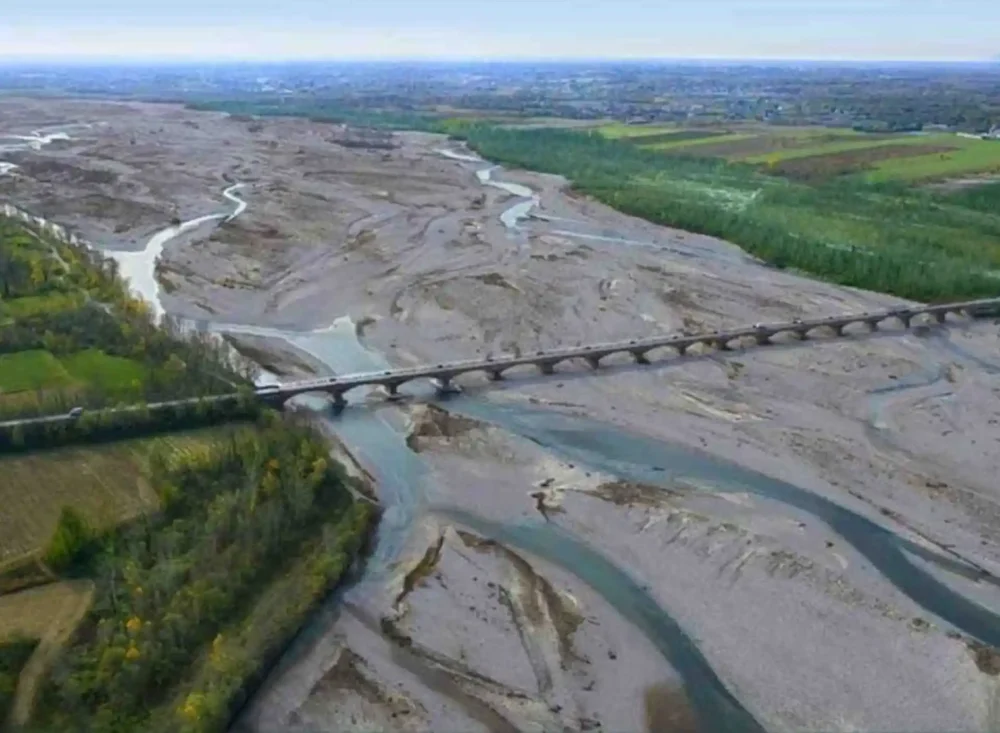THE TAGLIAMENTO, A EUROPEAN RIVER JEWEL, IS AT THE CENTER OF A DEBATE BETWEEN ENVIRONMENTAL AND INFRASTRUCTURE PROTECTION. THE PROJECT OF A CROSSBRIDGE WITH MOBILE GATES, INTENDED TO MITIGATE THE RISK OF FLOODS, HAS RAISED CRITICISM FROM INTERNATIONAL ASSOCIATIONS AND SCHOLARS FOR THE RISK OF COMPROMISING THE UNIQUE ECOSYSTEM OF THE RIVER
The Tagliamento river: a natural, historical and identity treasure
The Tagliamento, nicknamed the “River of Freedom”played a crucial role between 1917 and 1918, during the First World War, following the Italian defeat in the Battle of Caporetto (October 1917). In fact, it became a strategic defense line for the Italian army, which reorganized itself along its banks to slow down the Austro-Hungarian advance.
The resistance on the river, although temporary, allowed the army to gain time to establish a solid defensive line on the Piave, a prelude to the Italian recovery which culminated in the victory of Vittorio Veneto. This role as a bastion of freedom and national dignity has established it as a historical symbol of resistance and sacrifice.
A rare example of a pristine river ecosystem
In addition to this, the river course is a living testimony to the primordial force of nature, a rare example of a pristine river ecosystem. With a route of approximately 170 kilometres, between the Carnic Alps and the Adriatic Sea, it represents one of the last Alpine rivers to “braided channels”a morphology that, elsewhere, has been lost due to water regulation and canalization works. This type of riverbed allows the river to continuously modify its bed, generating an extraordinary variety of habitats that host a biodiversity that is unique in the European panorama.
Which is why, it is often defined “the King of the Alpine Rivers”. The flow of water, free from artificial barriers, allows the constant exchange between surface and groundwater, an essential phenomenon for the formation of differentiated environments, such as wetlands, screes and oxbow lakes.
This ecological richness makes the Tagliamento a refuge for rare animal and plant species, many of which are at risk of extinction. Among the most significant species we find the kingfisher, the European otter and the rare river crab. Its banks are dotted with riparian woods, populated by poplars, alders and willows, which act as ecological corridors for wildlife.
A bridge between nature and culture
The Tagliamento is not only a natural entity, but also a place of profound cultural identity. The towns and communities that arise along its banks have developed traditions that are rooted in the symbiosis with the river. Popular festivals, agricultural rites and local legends testify to the visceral bond between the inhabitants and its waters. The river has been a source of sustenance, but also of inspiration for poets, writers and artists who have celebrated its wild beauty and evocative power. Today, however, a heated debate is dividing the scientific community and environmentalists in two.
The cross-bridge: a controversial and inadequate project
Although presented as a necessary measure for hydraulic safety, the construction of a cross-bridge with mobile gates between Spilimbergo and Dignano has sparked opposition from environmental associations – including Legambiente, WWF, Flag e CIPRA Italy – as well as over eight hundred scholars from thirty-five countries. Experts believe that the work could irreversibly alter the river dynamics of the Tagliamento, undermining the natural mechanisms that allow the river to manage floods autonomously thanks to its ability to expand in the floodplains.
According to critics, the project is based on models that consider floods with a return period of one hundred years (i.e. flood events which, according to historical data, occur on average once every century), without however taking into account the increase in frequency and intensity of extreme climatic events caused by climate change. This design shortsightedness could make the structure obsolete already at the time of its construction, incapable of coping with more violent floods that exceed traditional forecasts.
The consequences of illusory interventions
Infrastructure interventions of this kind not only risk failing in their main objective, but contribute to creating an illusory feeling of security. This phenomenon often pushes administrations to downgrade areas at risk of hydraulics, allowing new constructions in potentially dangerous areas floodable. Italian history has already offered numerous examples in which similar errors have aggravated the effects of floods, increasing the vulnerability of communities and causing huge economic losses.
In the case of the Tagliamento, the construction of the cross-bridge could compromise river continuity, an essential element for safeguarding the ecosystem. The sedimentation and dispersion of natural materials, fundamental for the hydrogeological balance of the river, would be interrupted by a rigid structure, capable of altering the natural processes that guarantee ecological stability and biodiversity. But let’s focus on climate change.
Limits of traditional solutions
Extreme climatic events, such as those that hit Emilia-Romagna in 2023, demonstrate that flood risk cannot be completely eliminated through artificial works. Experts underline that a different approach is needed, based on understanding and respecting the natural dynamics of waterways.
New adaptation strategies, supported by European regulations such as the Nature Restoration Law, promote river restoration interventions that restore space to rivers rather than imprisoning them behind artificial barriers. The most effective measures include the expansion of floodplains, the retreat of embankments and the relocation of structures located in areas of high hydraulic risk. This approach allows floods to be contained in a more natural way, exploiting the intrinsic ability of rivers to expand and disperse water during floods.
Experts and environmental associations therefore ask that the Italian government reconsider the project and commit to protecting the river as an example of sustainable land management. The petition “Let the Tagliamento flow free” represents a call not only to save this historic waterway, but to promote a paradigm shift in environmental and energy planning.

